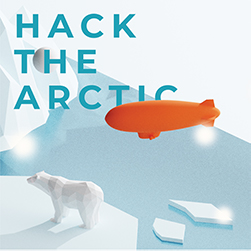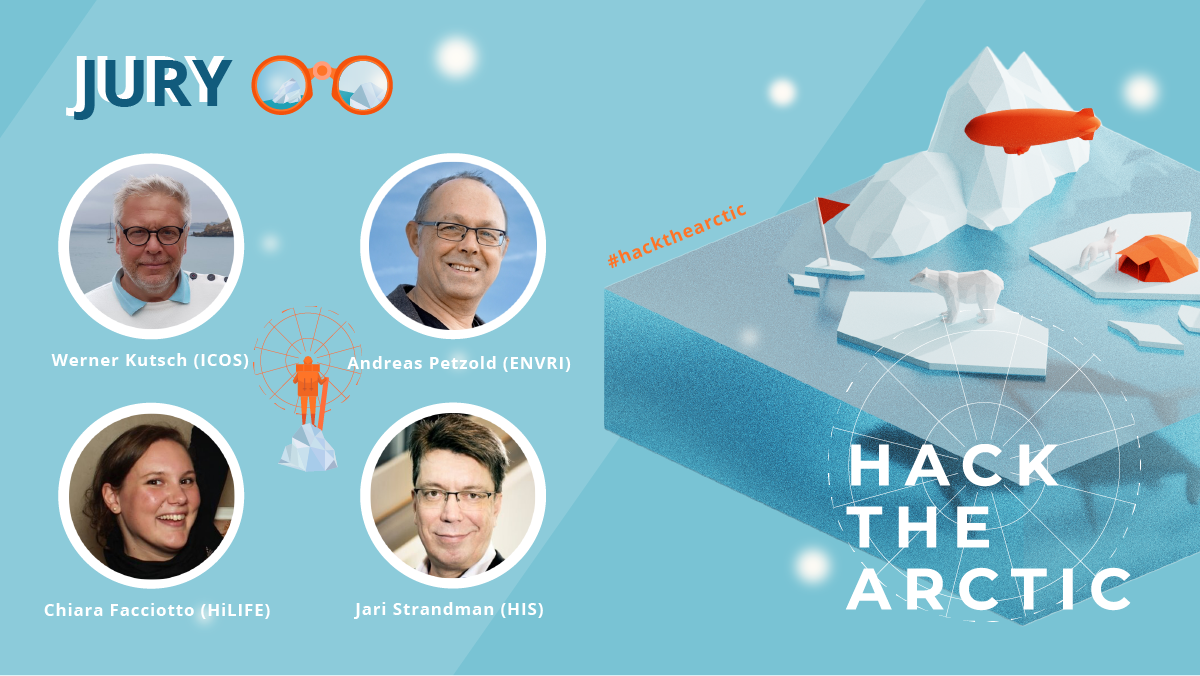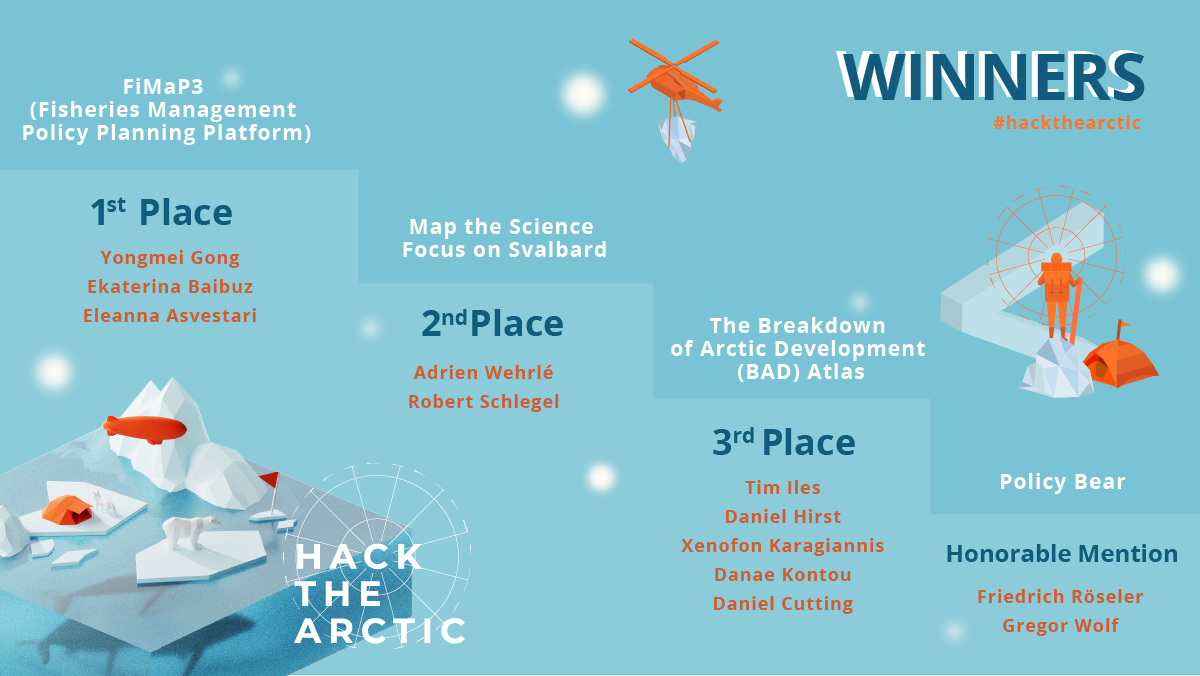
Last weekend 27 teams took part in the Hack the Arctic hackathon organised by ICOS, ENVRI and the Institute for Atmospheric and Earth System Research (INAR). Over 300 people from 5 continents had registered for the 48-hour event with the aim of using open data from Environmental research infrastructures, including ICOS, to design innovative solutions to arctic challenges. The winning team used multiple databases to develop a concept design for Fisheries Management Policy Planning Platform (FiMaP3).
A hackathon is a fast-paced ’hacking’ event, where participants team up to create solutions and concepts from scratch in a short amount of time, using big data sets to address current problems. Scientific data is allowing researchers to understand and predict the changes in the Earth System. This same data however can further assist other users to navigate and prepare for these changes through information and services tailored to their specific needs. This was the motivation behind Hack the Arctic.
The Arctic has served as an alarm for global climate change. It is warming faster than any other region and we can see the effects. Hack the Arctic offered 5 challenges for the participants to address: (1) map the available data coverage of the Arctic; design a service that uses science data for (2) policy-makers, or (3) citizens; (4) explore Svalbard data as a case study; or (5) design a data visualisation tool to address Arctic Haze.
The Winners
The peer-review process by the Hackathon participants narrowed the list of 27 submitted projects down to 10, out of which the jury selected the top 3 winners, plus an honourable mention.

“For me this was a brilliant learning experience to go through the different projects and see how you were using the data, developing ideas, creating different services and thinking about the different service users.” said Werner Kutsch, the Director General of ICOS RI and one of the jury members, to the participants during the closing ceremony. “The creativity and results from your work were really impressive,” he added.

1st place: FiMaP3 (Fisheries Management Policy Planning Platform)
The winning project of Hack the Arctic was FiMaP3. The team built a concept design of Fisheries Management Policy Planning Platform (FiMaP) for data-driven policy and decision making to protect the Arctic. FiMaP3 is a web-based, user-friendly tool that will give stakeholders access to historic data and future projections which are abundant across different data portals.
You can read an interview with the women behind this winning project on the ENVRI community website.
2nd place: Map the Science – Focus on Svalbard
The second place went to Map the Science – Focus on Svalbard, an application to “map the science” currently undertaken around Svalbard, making it possible to interact with the corresponding data. The app allows a user to look at the rates of change of key abiotic drivers of their choosing around Svalbard broadly, and to focus in on specific sites. The purpose of this app is to provide a quick and user-friendly way of investigating the climate risks around Svalbard.
3rd place: The Breakdown of Arctic Development (BAD) Atlas
The third place of Hack the Arctic went to The Breakdown of Arctic Development (BAD) Atlas, a web tool for tracking resource extraction. By incorporating these datasets in a visually appealing web-based platform the team hopes to provide a service that will be informative to policy makers who may not intuitively realise the extent of resource extraction activity in the Arctic.
Honourable mention: Policy Bear
A special honourable mention also went to Policy Bear. The team developed a prototype for a web interface to generate short and relatable sentences from climate data sets to use them in the next conference or meeting. The web interface enables policy-makers to create nice looking text graphics with a short sentence about the data and a comparison to a day-to-day measurement.
Sponsors and Partners
Firstly, we want to thank ICEYE for the monetary prizes for the top 3 teams and one on-demand ICEYE satellite image for the winning team. We also thank Heureka, Taiga Chocolates, and participating organizations for providing small gifts that will be sent out to the top 10 project participants. The participants of Hack the Arctic were also able to claim study credits for their participation in our event.
Secondly, we want to thank all the partners for their support in mentoring the participants and providing access to the various datasets used for the projects. 5 research infrastructures from the ENVRI community provided their data and support of their mentors – thank you!
